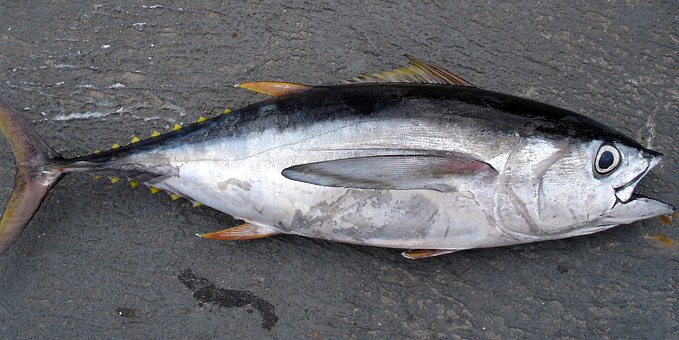
Krčmář P. Identifikace masa tuňáků v konzervách metodou real-time PCR. Identification of canned tuna by real-time PCR method Veterinářství 2018;68(7):501-504.
SOUHRN
V České republice patří tuňáci mezi oblíbené potraviny. Na potravinovém trhu jsou nejčastěji nabízeny jako tepelně opracované produkty – konzervy. Odlišná kvalita a cena různých druhů tuňáků může vést výrobce k záměně. Hlavní obtíží pro vypracování metody pro rozlišení těchto druhů ryb založené na analýze druhově specifických sekvencí DNA je vysoká shodnost sekvencí DNA mezi příbuznými druhy ryb. Byly srovnány všechny sekvence kompletní mitochondriální DNA tuňáka pruhovaného (Katsuwonus pelamis) a tuňáka žlutoploutvého (Thunnus albacares) se všemi ostatními sekvencemi mitochondriální DNA tuňáků obsaženými v Genové bance a byly určeny oblasti, které jsou nejvíce variabilní mezi druhy, a v této části byly navrženy primery a proby pro druhově specifickou amplifikaci tuňáka pruhovaného a tuňáka žlutoploutvého. Dále pro kontrolu přítomnosti amplifikovatelné DNA ryb (zejména tuňáků) ve vzorku byly navrženy primery a proba pro stanovení části sekvence mitochondriálního genu 12S rRNA v oblasti konzervativní sekvence pro ryby. Real-time PCR metoda pro stanovení uvedených druhů tuňáků byla ověřena na 38 vzorcích konzerv s deklarovaným obsahem tuňáka. Pouze u jednoho vzorku byl zjištěn jiný druh tuňáka, než bylo uvedeno na obale.
SUMMARY
In the Czech Republic tuna species belong among favourite food. Tuna fish are mostly sold as a heatprocessed canned products at the market. Different quality and prize of tuna species can lead the producer to the adulteration/fraud. The main difficulties in developing of method for these fish species identification is high similarity of DNA sequences among close relative fish species. All complete mitochondrial DNA sequences of skipjack tuna (Katsuwonus pelamis) and yellowfin tuna (Thunnus albacares) were compared to all other mitochondrial DNA sequences of tuna fish saved in GeneBank. The most variable regions within species were determined and primers and probe were designed in this region for the species specific DNA amplification of skipjack tuna and yellowfin tuna. Moreover to check the content of amplifiable DNA of fish (namely tuna) in the sample, the primers and probe of mitochondrial 12S rRNA gene in the region of conservative sequence for fish were designed. Real time PCR methods were verified investigating of 38 samples of canned tuna with the declared content of tuna species from the market. Only one sample contained another tuna species in spite of the declaration.*